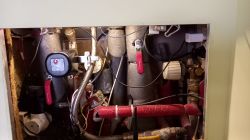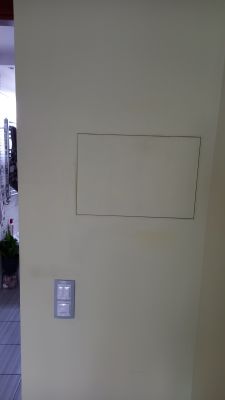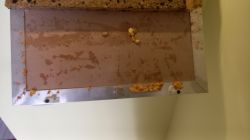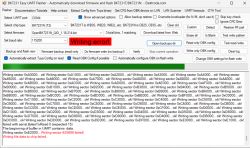Hello
I have fitted a Tuya valve controller on the water supply to the DHW boiler. That's the one on the left.The boiler in full plasterboard on the rack plus a lot of pipes in the revision:

Unfortunately, WiFi didn't get there. So I replaced the controller with Zigbee.It too is offline when the revision flap is closed.The flap looks like this:

The gate ( 5m distance) does not see it.So I inserted a Zigbee repeater inside. And interestingly the signal from the repeater as normal reaches the gate, but from the controller does not.I checked that the controller connects to this repeater, but unfortunately after closing the flap it becomes immediately offline. This is the first conundrum. I looked inside for the optimum place for the repeater, but this did not give anything. The flap has an aluminium frame.From the inside it looks like this:

These scabs are remnants of a mute sponge which I tore off, thinking that it contributes to signal attenuation. Could this frame on the flap be creating some sort of obstruction? Of course, with the flap open the signal is ok.I've run out of ideas:-( What else can be done?
I have fitted a Tuya valve controller on the water supply to the DHW boiler. That's the one on the left.The boiler in full plasterboard on the rack plus a lot of pipes in the revision:

Unfortunately, WiFi didn't get there. So I replaced the controller with Zigbee.It too is offline when the revision flap is closed.The flap looks like this:

The gate ( 5m distance) does not see it.So I inserted a Zigbee repeater inside. And interestingly the signal from the repeater as normal reaches the gate, but from the controller does not.I checked that the controller connects to this repeater, but unfortunately after closing the flap it becomes immediately offline. This is the first conundrum. I looked inside for the optimum place for the repeater, but this did not give anything. The flap has an aluminium frame.From the inside it looks like this:

These scabs are remnants of a mute sponge which I tore off, thinking that it contributes to signal attenuation. Could this frame on the flap be creating some sort of obstruction? Of course, with the flap open the signal is ok.I've run out of ideas:-( What else can be done?






